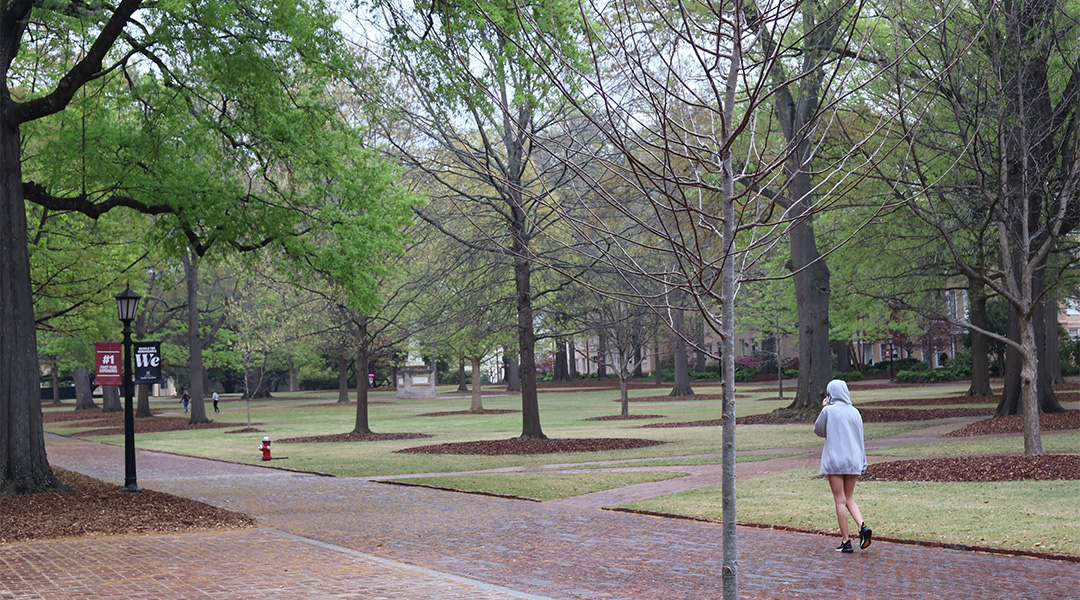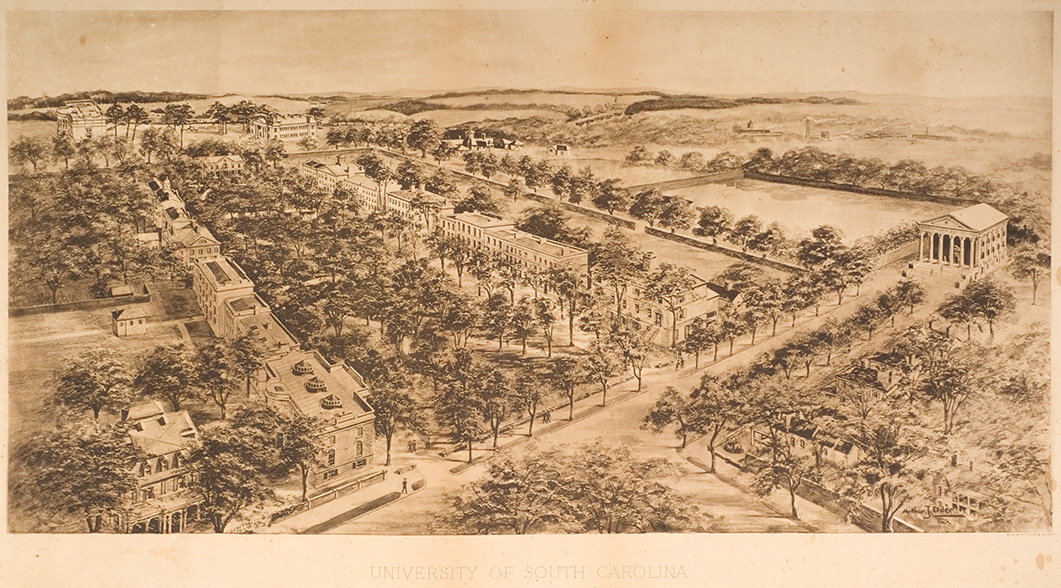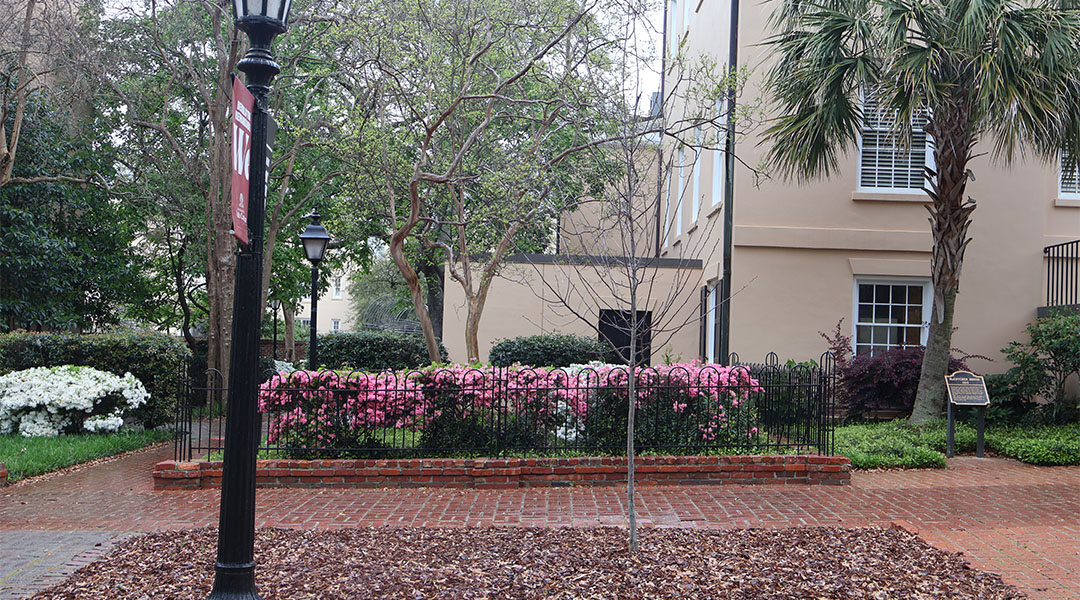A new black gum outside of the South Caroliniana Library at the foot of the Horseshoe. (Photo by Mingo Martin/Carolina News and Reporter)
Two new trees have joined the dozens of mature trees on USC’s historic, large green space at the center of campus.
University of South Carolina arborists planted two black gum saplings on the Horseshoe on Sumter Street in January.
One of the trees replaces a 75- to 100-year-old laurel oak near the South Caroliniana Library. The second tree stands in front of McCutchen House restaurant, replacing a dogwood tree.
The Horseshoe has long been the a symbol of the state’s flagship university. As the city has evolved over two centuries, the historic Horseshoe has remained a peaceful haven for students, a place where they gather under the canopy on a beautiful day.
The black gums are native to the state. Planting native trees was important, USC archivist Elizabeth West said. And they needed to be the right size. Black gums grow smaller than many of the oaks on campus and would be less likely to cause damage to nearby buildings.
The black gum grows to 30- to 50-feet-tall, with a spread of 20 to 30 feet, according to Clemson University Cooperative Extension Service.
“It is a native tree, and it has dark green leaves and then is very brightly colored in the autumn – beautiful red-orange leaf color in the fall,” West said. “It doesn’t have very showy flowers in the spring. But it’s a good tree for pollinators. That was something we also considered as well. You want to be good stewards of our Horseshoe’s native, natural environment.”
Another criterion during the tree selection process was biodiversity. Maintaining a diverse population on campus ensures the trees won’t be susceptible to the same pest or disease, West said.
USC’s campus once was home to many elm trees. Most were killed by Dutch elm disease during the late 19th and early 20th centuries. There are more than 10,000 trees on campus now, but only one is an elm, West said.
The university typically adds new trees to the Horseshoe when old ones are removed, said USC communications manager Koby Padgett. A white oak was planted in late 2023.
“We have two arborists on staff, and they are constantly checking the trees and making sure they’re OK,” Koby Padgett said. “Anytime that one has come to the end of its life, they will take it down and then replace it as soon as they can.”




